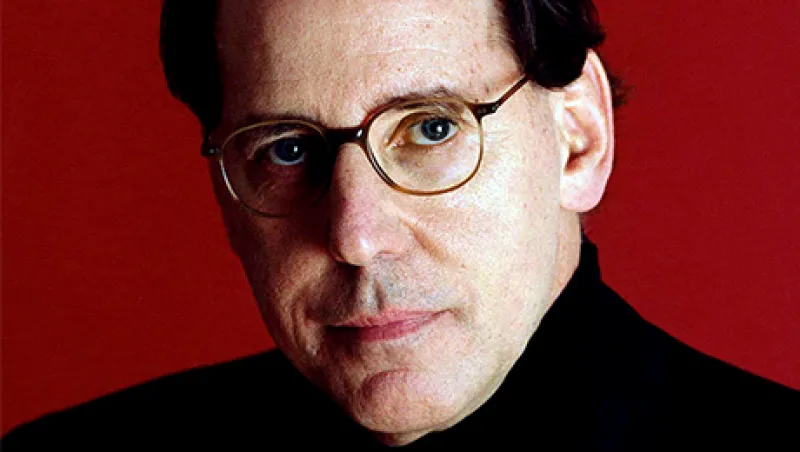Institutional Investor founder Gilbert Kaplan died New Year’s Day following a battle with cancer. Kaplan, who would have turned 75 in March, leaves a legacy of excellence that spans the worlds of finance, journalism and the arts. The New York native and onetime American Stock Exchange economist recognized early on that pension funds and the asset managers investing their money were fast becoming a driving force in financial markets, and he built a successful media business spanning magazines, newsletters, conferences, journals and research products to meet their needs. He went on to pursue a second career as an amateur conductor and music scholar, specializing in the work of Gustav Mahler, and led performances of the Austrian composer’s Second Symphony with more than 60 orchestras around the world.
Kaplan was born at French Hospital in New York City on March 3, 1941, and grew up in the Long Island suburb of Lawrence. His father, a textile manufacturer, died when Kaplan was 17. The younger Kaplan started college at Duke University but felt out of place in the South and returned to New York to attend the New School for Social Research. After graduation Kaplan worked for economist Peter Bernstein, who at the time was running investment consulting firm Bernstein-Macauley; he would go on to be the first editor of Institutional Investor’s Journal of Portfolio Management. Through Bernstein, Kaplan got to know the Amex, which hired him in 1963 to do economic research.
During his days at the Amex, Kaplan saw that professional money managers were starting to play a major role in the markets yet didn’t have a publication devoted to their unique problems and opportunities. He quit his job in late 1966 and tried to buy The Magazine of Wall Street, a stodgy investment digest that had been in decline since the Depression. When that deal fell through, Kaplan decided to launch his own publication, raising about $150,000, including $100,000 from Gerald Bronfman, whose family owned spirits maker Seagram. In March 1967 — the month he turned 26 — Kaplan published the first issue of The Institutional Investor, whose cover featured a powerful photograph of traders at the Montreal Stock Exchange. By 1970, Institutional Investor had dropped the article from its title and built a reputation for a no-holds-barred style of journalism that combined the highest level of storytelling with compelling graphics. “Despite its forbidding name, Institutional Investor is the brightest addition to the marketplace,” wrote Time. “In this arcane area of journalism, the magazine is fast proving that writing about high finance can be both exciting and amusing.”
Kaplan cashed in on the excitement, and showed his impeccable timing, by taking Institutional Investor Systems public in 1969, at the height of the bull market, raising more than $1.3 million by selling 100,000 shares at $13.50 apiece. By December 1973, in the middle of what would be one of the worst bear markets in history, Institutional Investor’s stock price had fallen 90 percent since its IPO, allowing Kaplan to buy back the company at $3 a share. That same year he moved II’s offices from downtown, at 140 Cedar Street, to more-spacious digs in midtown Manhattan, at 488 Madison Avenue, a block north of St. Patrick’s Cathedral.
As both editor-in-chief and publisher of an upstart financial magazine, Kaplan liked to be controversial; he didn’t want II to be seen as beholden to any of the constituencies it covered (or that advertised in it). In 1972 he came up with the idea of identifying the best analysts on Wall Street, surveying the people whose opinions mattered most: the asset managers who used their research. The result was the All-America Research Team, which celebrated its 44th anniversary last year and has spawned 11 similar II equity and fixed-income analyst rankings around the world.
“Gil Kaplan created a system that revolutionized the careers of research analysts on Wall Street,” says Evercore ISI chair Edward Hyman Jr., who was the All-America Research Team’s top-ranked analyst in Economics for 35 straight years. “It was a visionary stroke of genius that has lasted 40 years and will last another 40 years. It has no parallel.”
Much of Kaplan’s success came from his ability to recognize and recruit talented journalists from a variety of backgrounds. Institutional Investor’s first editor, George J.W. Goodman, was the best-selling author of The Money Game, written under the pseudonym Adam Smith. Peter Landau, who was editor of II from 1971 to 1990, was hired from Newsweek. Chris Welles, who won the 1983 National Magazine Award for reporting for an II cover story on the Drysdale Government Securities bond-trading scandal, was a former business editor of Life. In total, II won 40 major journalism prizes during Kaplan’s tenure as editor-in-chief, from 1967 to 1992.
From the beginning Kaplan envisioned Institutional Investor as much more than a magazine company. In January 1968, II held its first investment conference. “We thought we could get 300 people to attend, we were hoping for 500, and ultimately the conference attracted 1,500 people,” says Heidi Fiske, who was hired by Kaplan as a journalist in 1967 and went on to head up the Institutional Investor Institute membership business before leaving in 1981 to join Oppenheimer & Co.
In 1973, Kaplan bought The Wall Street Letter from Myron Kandel, marking the start of Institutional Investor’s newsletter division, which eventually produced 20 different titles covering almost every area of asset management and capital markets. Still, not all of his ideas were successful. Institutional Investor Video — which Kaplan said in a 1969 interview would “be to the investing community what CBS-TV news is to its audience” — failed to gain traction among brokerage firms and banks, and was later shelved.
Kaplan sold Institutional Investor to Capital Cities Communications in 1984 for an estimated $70 million. Although he stayed involved as chairman of the company and editor-in-chief of its flagship magazine, Kaplan was already pursuing one of his other great passions: music. Two years earlier, to celebrate Institutional Investor’s 15th anniversary, the then-41-year-old Kaplan had rented out Avery Fisher Hall and hired the American Symphony Orchestra to play Mahler’s Second Symphony under his direction. “From the first time I heard this symphony, it has had an emotional claim on me, difficult to describe,” Kaplan wrote in a New York Times op-ed in June 1983. “After years of studying the work, attending every performance I could, listening to every record available, I decided that the only way I could fully experience it was actually to conduct the work.”
Kaplan, who’d had just three years of piano lessons as a kid, spent 13 months preparing to conduct the September 1982 concert, studying five hours a day with a private teacher. Mahler’s Second, also known as the Resurrection Symphony because it deals with the theme of life and death, is exceedingly difficult: It has five movements, runs for 90 minutes and employs 300 musicians and singers. From all accounts, Kaplan pulled off his first foray into conducting, bringing to tears many of the bankers, investors and financiers among the 2,700 guests in attendance that evening. The American Symphony Orchestra invited him to conduct a public performance of the Resurrection Symphony the following spring, and that led to dozens of invitations from orchestras around the world. Kaplan, who went on to become one of the world’s leading authorities on Mahler, limited himself to three performances a year and never accepted a fee, allowing him to retain his amateur status and not risk diluting his passion for pursuing his dream.
As he wrote in the June 1983 New York Times op-ed: “We all have dreams and there is no question that one of life’s great tragedies is that so few of us fulfill them. Often it is because we are so locked into our daily routine that we cannot see our way clear. More fundamentally, though, it’s a lack of nerve, an unwillingness to take the necessary risks. We are reluctant to sacrifice, we are afraid of failure, but most of all we are afraid of ridicule.”
Like many of the greatest entrepreneurs, Gilbert Kaplan was successful because he wasn’t afraid of failure.
Follow Michael Peltz on Twitter at @mppeltz.






